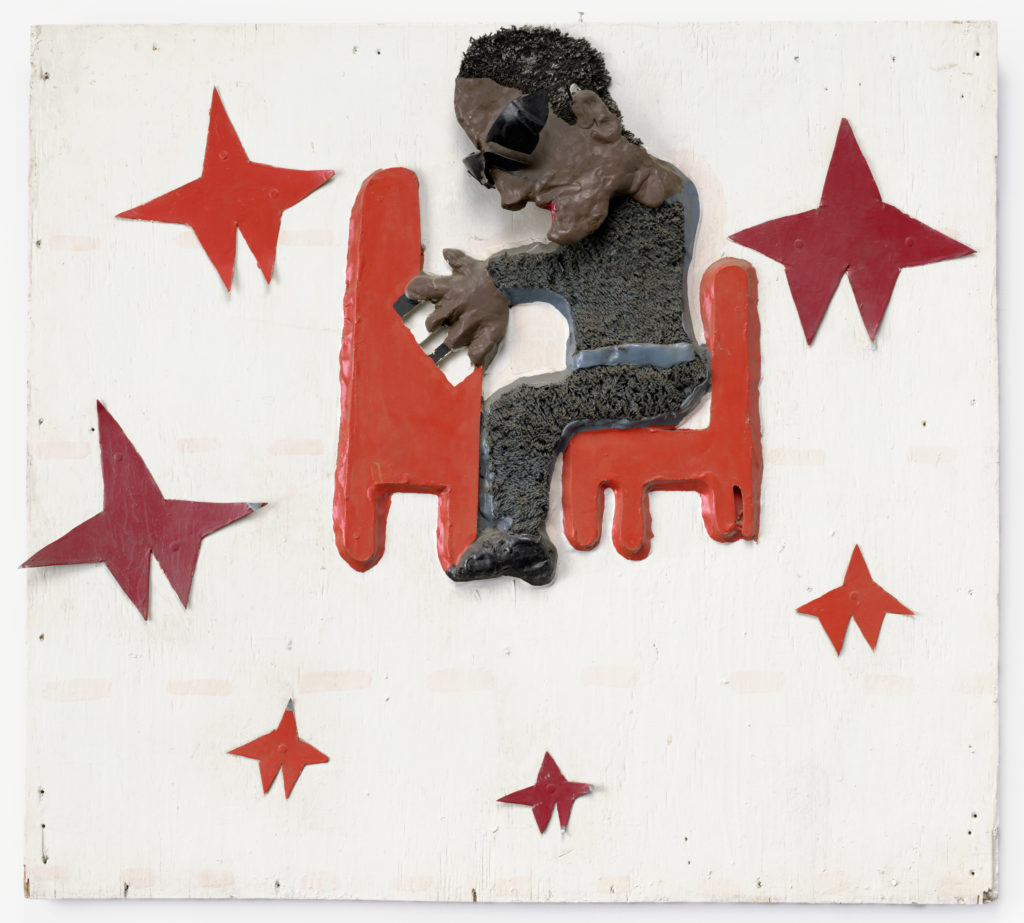
By Sheila Wickouski
A Man Can Be A Star by Thornton Dial, Jr. is itself a sparkling star in the constellation of
artworks in the exhibition Called to Create: Black Artists of the American South at the National Gallery of Art, on view through March 26, 2023.
Pop art sensibility and a political message meld in this collage of the legendary musician Ray Charles at the keyboard. The use of humble materials like metal, wood, carpet and dark glasses all fittingly represent the singer’s rise from poverty to musical heights.
Artworks such as Jacob Lawrence’s Migration Series reflect on the millions of African Americans who moved from the rural south to northern states, but this exhibit takes a different route in presenting art works by the descendants of those who did not migrate but remained in the Southeastern United States.
Thornton Dial, Sr. uses a variety of media to engage with these issues. He used a window screen and wire to depict the struggle of migrants in Refugees Trying to Get to the United States (1988) and a mattress frame, carpet, rope and plastic to depict the costs of industrialization in Clothes Factory (1995). For The Last Trip Home (Diana’s Funeral) (1997), a work on paper which commemorates the event of Princess Diana’s death, he uses traditional charcoal and graphite.
Using bold colors with non-traditional materials, artists produced drawings, paintings and sculptures that are imaginative and engaging. Some are haunting and humorous, like James “Son Ford” Thomas’ four clay heads created with artificial hair, glass marble eyes and aluminum foil. My personal favorite is Hawkins Bolden’s Untitled, created from a shovel head with a garden hose and wire.
More traditional are the quilts. Nine quilts made by artists of Gee’s Bend, Alabama are interspersed throughout the exhibition.
After viewing the art, visitors can immerse themselves in a multimedia collage gallery Heading South. There are videos of the artists at work in their homes or while they go about sewing in quilting sessions, searching junk yards for material or in their backyard hammering metal or working with clay. Playing in the background are blues, gospel and spirituals, sometimes with the artist singing. A wall map highlights the artists represented from this region, from Tennessee to Florida, from Georgia through Alabama and Mississippi to Louisiana.
What is noticeably absent from any wall text are words like self-taught, outsiders, outliers, visionary, primitive or naive. It might be noted that we would not use those words to describe Ray Charles, nor to classify works by writers from this region (like William Faulkner or Tennessee Williams). Charles used his voice and his piano, the writers used words with pen and paper. So too, these artists used the materials available to them. These are “Black Artists from the American South” who share the call to create art.
In December 2020, the National Gallery of Art acquired these 40 works from the Souls Grown Deep Foundation. The works in this very special exhibit are now in the permanent collection.

